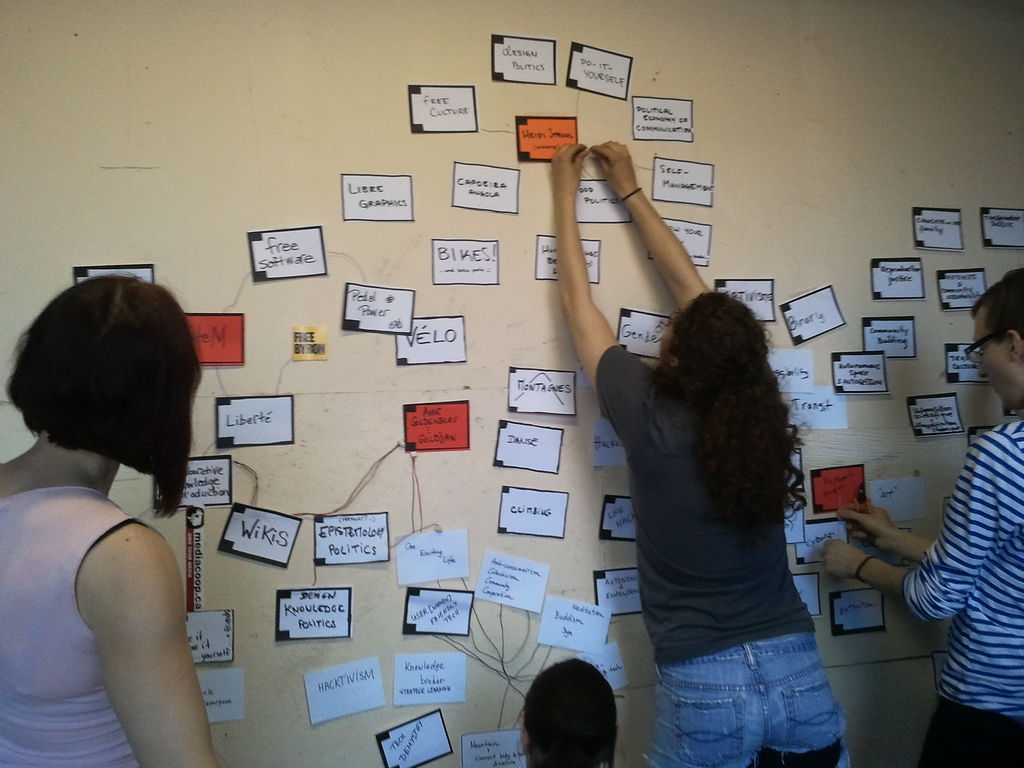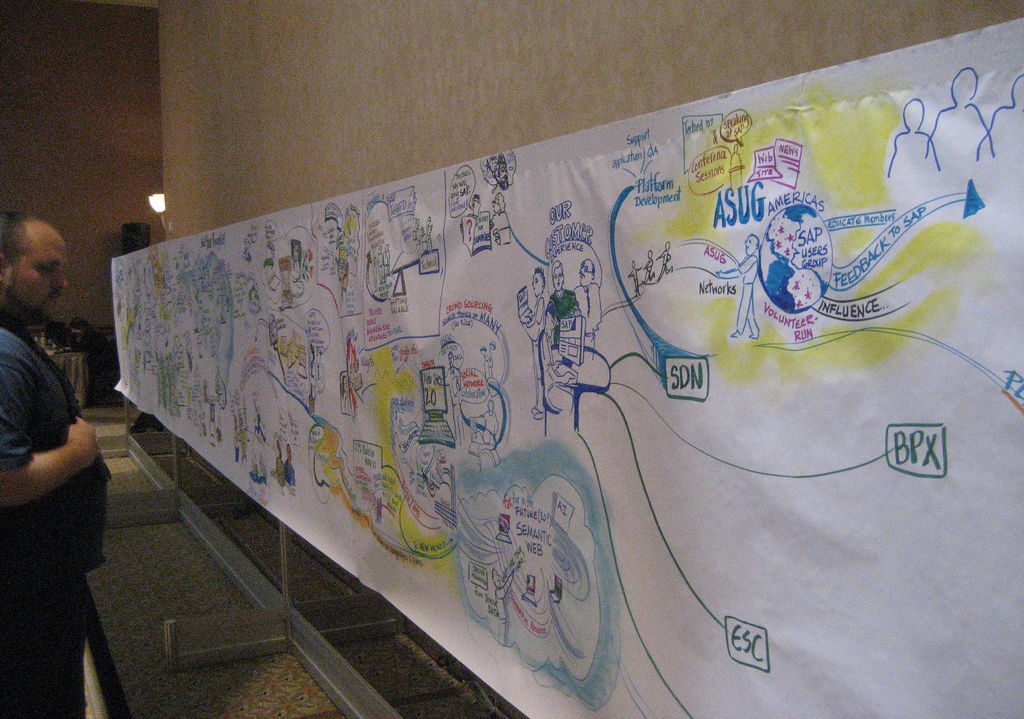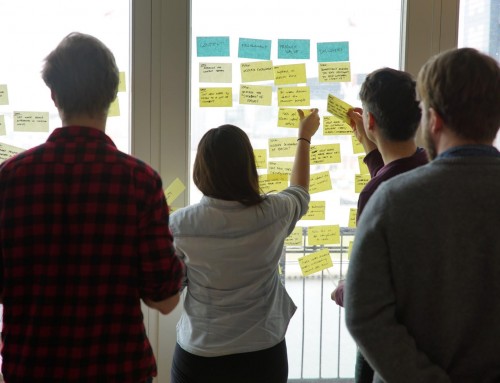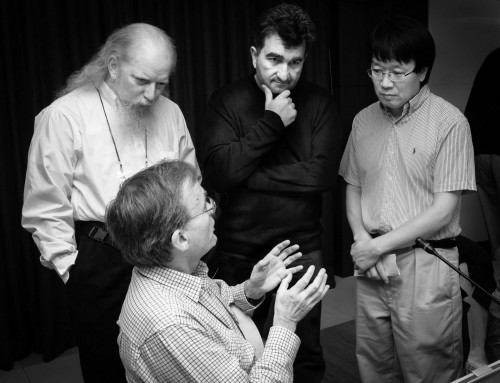Collective Mind-Mapping
Main Takeaways
Reading Time: 2 minutes Collective Mind-Mapping facilitation creates a collective and collaborative, commonly shareable mind map.
Description of Collective Mind-Mapping
Collective Mind-Mapping is a facilitation format I use frequently. In contrast to traditional mind mapping — which is merely an individual task — Collective Mind-Mapping is a collective and collaborative activity.Mind maps are diagrams used to visual information. Mind maps are often created around a single concept, drawn as an image in the center of a blank landscape page, to which associated representations of ideas such as images, words and parts of words are added. Major ideas are connected directly to the central concept, and other ideas branch out from those.
In contrast to traditional mind mapping, Collective Mind-Mapping is a group activity instead. The participants create the mind map collectively and collaboratively on a huge poster wall or with an online tool.
Rules of Collective Mind-Mapping
Participants
- The group has less than 15 people.
- The group listens actively and attentively.
- Everyone has space to be deeply heard.
- The group draws each mind map element with consensus after thorough discussions.
When to use Collective Mind-Mapping
- Integrate people to change processes, methods, maps, and planning tools.
- Diversity of players matters.
- Complexity of elements matters.
- To share stories,
- To initiate diverse thinking,
- To hear every voice in collaborative decision making.
- Need to call up the collective intelligence of a group.
- Identify what’s “behind” an issue.
Facilitator Role
- Supports the creative process of each person in the group (listening deeply and appreciatively to each contribution).
- Listens deeply, and creates a space where each participant can be deeply heard.
- Provides empathy, respect, and support for each participant’s contribution.
- Values each participant's contribution.
: goldjiann, via flickr.com • Michael Coté, via flickr.com, .








Leave A Comment